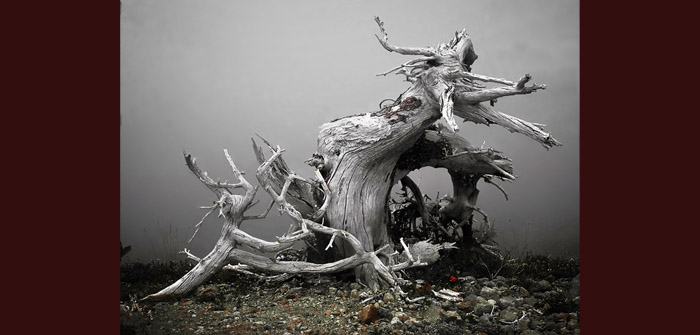(Whitebark Pine Still Standing | Photo by Paul Glasser)
On May 23, 2018 after months of careful planning, the U.S. Forest Service and Deschutes National Forest conducted a prescribed burn on the grounds of the High Desert Museum. More than a year later, visitors can see nature rebounding as wild strawberries, rabbitbrush and manzanita grow anew. How did a seemingly devastating event such as fire support new growth and biodiversity?
A new High Desert Museum exhibit, Nature’s Resilience, highlights nature’s beauty and strength following disturbances. The original exhibit opens on Saturday, November 23.
Nature’s Resilience will feature large-format photography illustrating the dichotomy of devastation and new life. A variety of High Desert habitats including pine forests, riparian ecosystems and sagebrush steppe are examined before and after devastation. Fire, floods and pine beetle outbreaks are shown to be vital to ecological health. The heat of a wildfire opens the seeds of native plants such as manzanita. Wildfires create snags — standing dead trees — that offer valuable wildlife habitat. From the ruins, new life is born.
Nature’s Resilience will also address the unintended consequences of humans actively increasing some disturbances and suppressing others. For instance, after generations of fire suppression and overgrazing, the spread of native juniper trees away from rock outcroppings can be seen throughout the High Desert. After channelizing High Desert rivers to prevent flooding, native species dependent on the river’s water and nutrients can feel extreme impacts.
The exhibit features the work of photographers Bruce Block, David Bahr, Paul Glasser and High Desert Museum Curator of Wildlife Jon Nelson.
The museum is located at 59800 U.S. 97 in Bend.
Current Hours (November 1 – March 31) are 10am to 4pm
Admission Prices:
General — $14
Seniors (65 plus) — $12
College Students (with I.D.) — $12
Children (ages 3-12) — $9
2 and younger free





